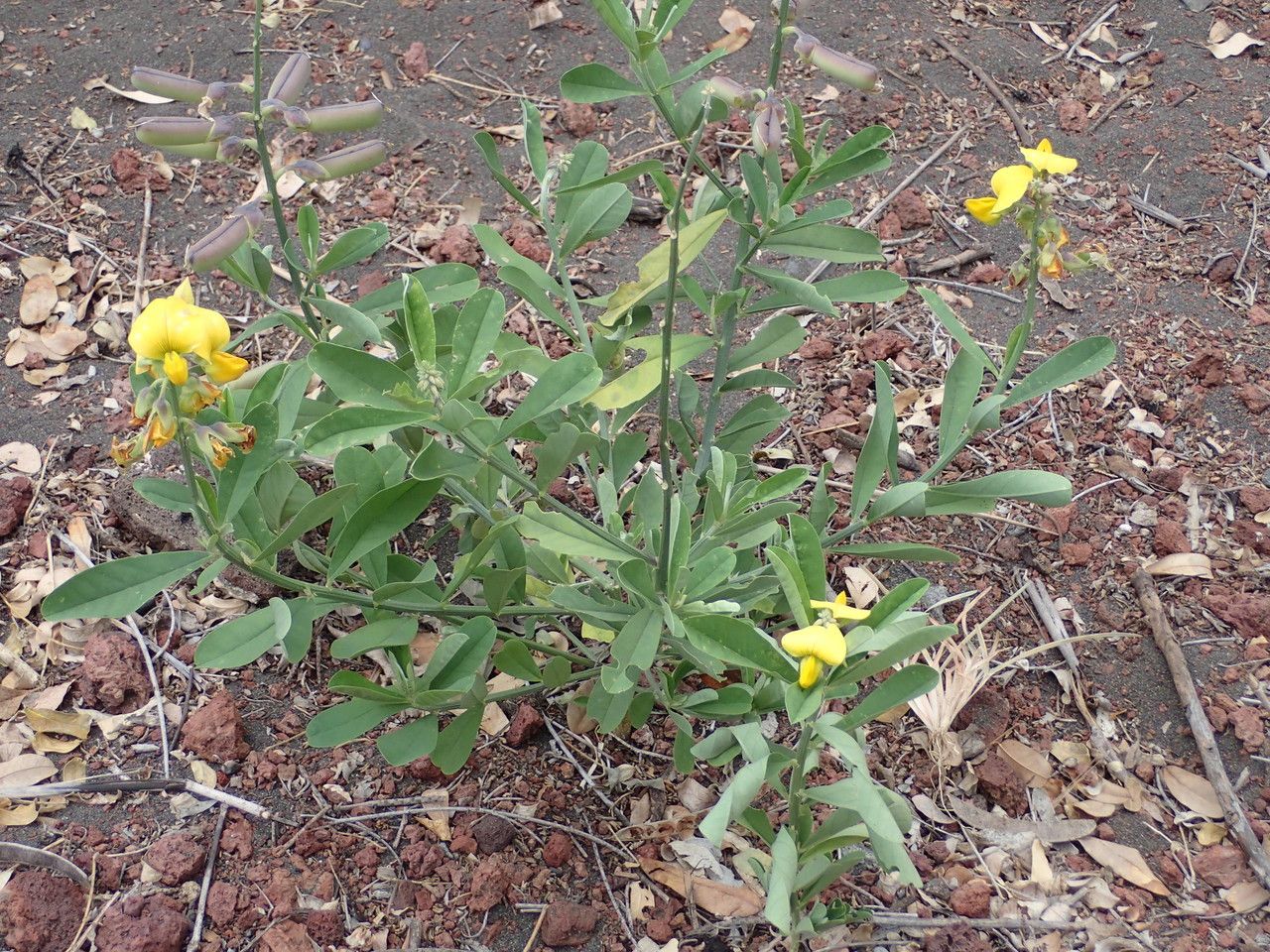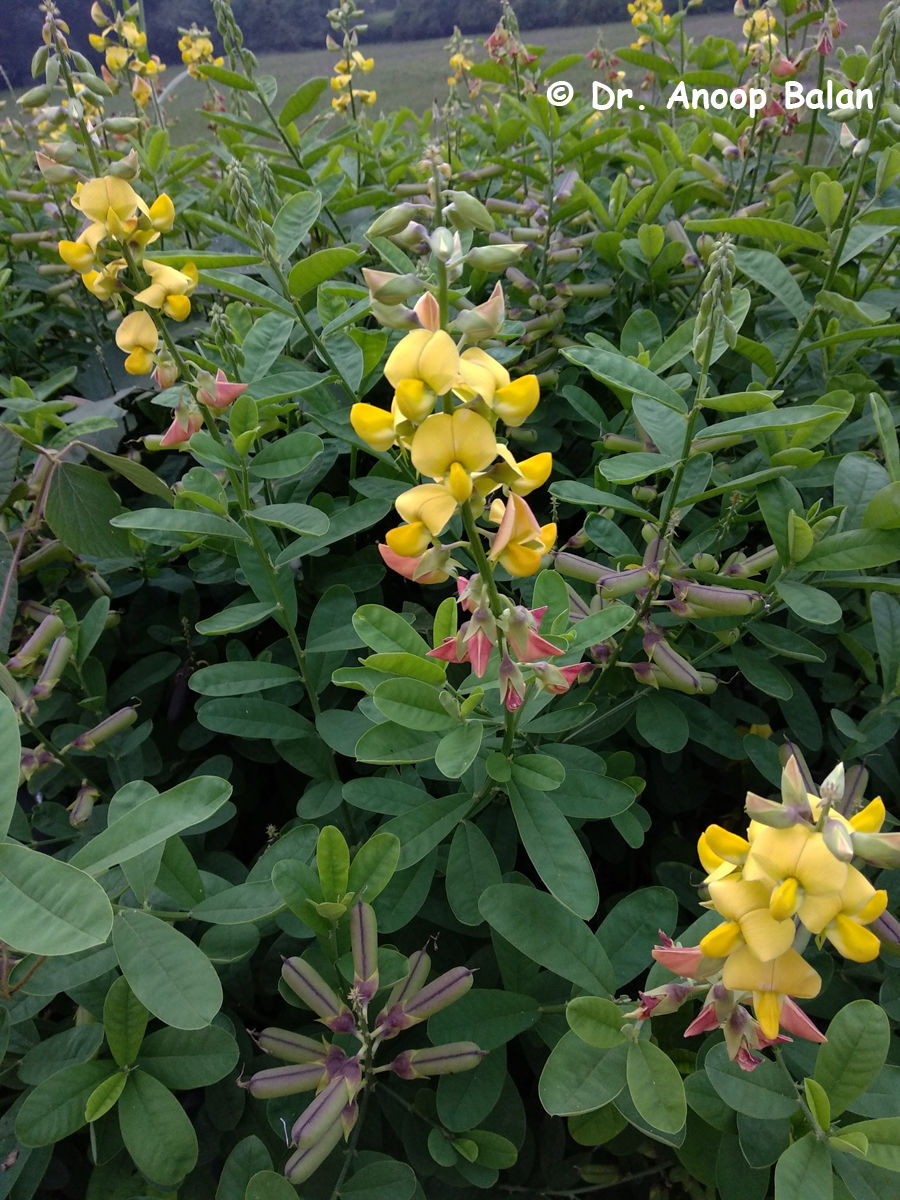False Sicklepod
crotalaria retusa
Also known as: ["False Sicklepod","Rattlebox"]
Overview
A leguminous plant known for its toxic properties and yellow flowers.
Benefits & Perks
["drought tolerant","wildlife attractant (bees, butterflies, birds)"]
Botanical Classification
| Phylum: | Magnoliophyta |
| Class: | Magnoliopsida |
| Order: | Fabales |
| Family: | Fabaceae |
| Genus: | Crotalaria |
| Botanical Name: | Crotalaria retusa |
Plant Characteristics
Basic Information
- Category: Herbs & Weeds
- Suitable Location: outdoor garden bed in temperate to tropical regions
- Suitable For:
- Is Weed: No
- Allergenicity: low
Environmental Needs
- Climate: {"temperatureRange":"10–35°C"}
- Hardiness: {"zones":"9–11"}
- Misting: rarely required, only if ambient humidity is very low
- Drainage: Fast-draining to prevent waterlogging.
- Soil Type: Well-draining, loamy soil with added organic matter.
Maintenance Level
- Maintenance Level: moderate
- Toughness Level: moderate
- Pruning Frequency: Annually in late winter or early spring; light pruning can be done as needed.
- Pruning Intensity: Moderate; remove up to one-third of growth if plant is overgrown.
Care Details
Ideal Sunlight Coverage:
Full sun (6–8 hours/day); tolerates partial shade but may flower less.
Sunlight Tolerance Tips:
Acclimate gradually to intense sunlight; protect from harsh midday sun; adjust placement based on indoor/outdoor conditions.
Care Requirements
Care Difficulty
moderatemoderate
Sunlight
full sun to partial shade
Rotate plant for even light; use sheer curtains for filtered sun; avoid direct afternoon sun indoors.
Watering
every 7–10 days during growing season, reduce in winter
Water thoroughly but infrequently; ensure soil dries between waterings; avoid overwatering.
Soil
well-draining, loamy soil with moderate organic content
pH: Slightly acidic to neutral (pH 6.0–7.0).
Use a mix of potting soil and perlite; avoid heavy clay soils; ensure pots have drainage holes.
Temperature
Warm conditions (65–85°F/18–29°C); prefers stable temperatures; sensitive to frost.
Avoid sudden temperature changes; protect from frost; ensure good air circulation.
Fertilizing
every 4–6 weeks during active growth
Apply fertilizer after watering; flush soil occasionally to prevent salt buildup; reduce frequency in dormant periods.
Propagation
Methods
Stem cuttings or seed; stem cuttings are faster and more reliable.
Step-by-Step Propagation Guide
- Take a 4–6 inch cutting.
- Remove lower leaves.
- Dip in hormone.
- Plant in medium.
- Keep moist and warm.
Best Time: Spring or early summer when growth is active.
Environment
Warm (70–75°F/21–24°C), humid, and bright indirect light.
Medium
Well-draining mix of perlite and peat moss or cactus mix.
Hormone
Recommended to use rooting hormone for faster root development.
Timeline
Roots may develop in 3–4 weeks; establish in new pot within 2–3 months.
Tools Needed
Pruning shears, rooting hormone, small pots, well-draining medium.
Quick Tips
Use healthy, non-flowering stems; maintain high humidity with a plastic cover; avoid direct sun.
Pruning & Repotting
Pruning Guide
Method
Use clean cuts just above a leaf node or bud; shape the plant evenly.
Pruning Plan
Prune to maintain shape, encourage bushiness, and remove dead or diseased growth.
Tools
Pruning shears, sterilizing solution, gloves.
Checklist
Sterilize tools; prune dead/damaged growth; shape plant; clean up debris.
Repotting Guide
Best Season
Spring, before the active growing season begins.
Pot Size
Increase pot size by 2–3 inches in diameter; ensure good drainage.
Method
Remove plant gently; trim roots if needed; place in new pot with fresh soil; water lightly.
Suggestions
Repot every 2–3 years or when roots fill the pot; beneficial for growth and health.
Checklist
Check root bound status; prepare new pot; trim roots; use fresh soil; water after repotting.
Advanced Care Tips
Watering Mastery
Watering Checklist
Check soil moisture; water deeply; ensure drainage; adjust for season.
How to Apply Water Properly
Water at the base of the plant, ensuring moisture reaches the root zone; allow excess water to drain away; water early in the morning to minimize evaporation.
Watering Schedule Tips
Water deeply once the top inch of soil is dry; reduce frequency in winter to prevent root rot.
Soil Improvement
Add perlite or sand for drainage; incorporate compost for fertility; ensure aeration with organic matter.
Temperature Stress Management
Signs of Temperature Issues
Wilting, leaf drop, or stunted growth in cold; scorching or leaf curl in excessive heat.
Cold Stress
Growth slows or halts; roots may rot in cold, wet soil; leaves may yellow or drop.
Solution: Move to a warmer location; protect from drafts; avoid overwatering in cold conditions.
Hot Stress
Leaves may scorch, wilt, or drop; flowering may be reduced; soil may dry too quickly.
Solution: Provide shade during peak heat; increase humidity; water more frequently but avoid waterlogging.
Fertilizing Guide
Fertilizing Checklist
Check season; dilute fertilizer; apply to moist soil; avoid contact with foliage.
Fertilizing Method
Use balanced liquid fertilizer diluted to half strength every 4–6 weeks during growing season; avoid fertilizing in winter.
Common Problems & Solutions
Toxicity Warning
Cats
ToxicCrotalaria retusa is toxic to cats due to its pyrrolizidine alkaloid content, which can cause liver toxicity and failure. Cats are particularly sensitive to such compounds.
⚠️ Symptoms:
🌿 Toxic Parts:
⚡ Toxic If:
if eaten
Dogs
ToxicThe pyrrolizidine alkaloids in Crotalaria retusa are toxic to dogs, causing liver damage and potential failure. Chronic ingestion can lead to severe health complications.
⚠️ Symptoms:
🌿 Toxic Parts:
⚡ Toxic If:
if eaten
Humans
ToxicCrotalaria retusa contains pyrrolizidine alkaloids, which are hepatotoxic and can cause severe liver damage upon ingestion. Chronic exposure may lead to liver cirrhosis or failure.
⚠️ Symptoms:
🌿 Toxic Parts:
⚡ Toxic If:
if eaten
Frequently Asked Questions
Q: Is Crotalaria retusa toxic to humans?
A: Yes, it is toxic to humans.
Q: Does Crotalaria retusa attract wildlife?
A: Yes, it attracts bees, butterflies, and birds.
Q: Is Crotalaria retusa a weed?
A: Yes, it is considered a weed.
Quick Reference
| Family: | Fabaceae |
| Care: | moderate |
| Light: | full sun to partial shade |
| Water: | every 7–10 days during growi |
Get Expert Care Tips
Download the Plantious app for personalized care reminders and plant identification!
Google Play App Store








